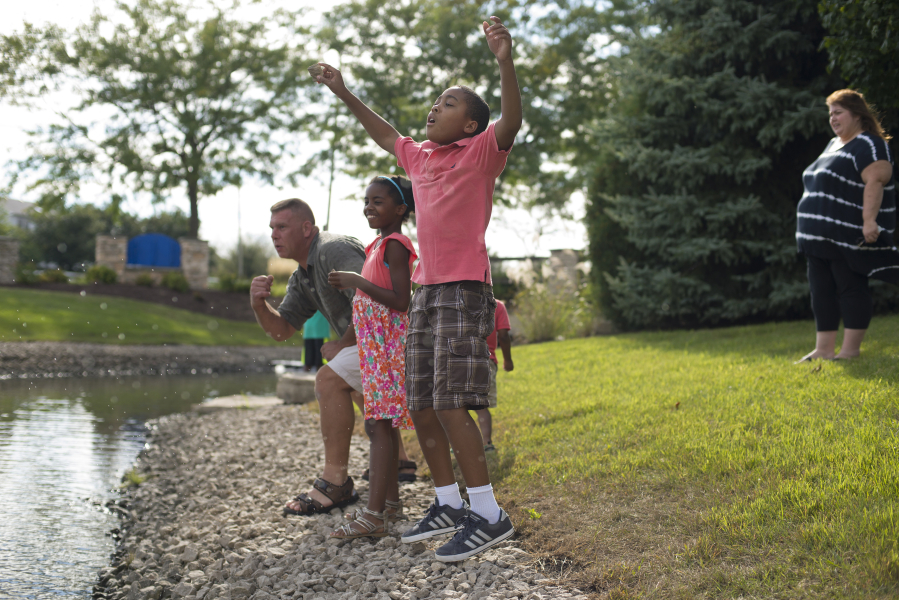In November 2014, Bethany and Jared Crain got a call saying that they were matched with an expectant mother.
While they were ecstatic that they could be adding to their family of three, they decided not to tell their 4-year-old that she could be getting a sibling.
“We weren’t very certain that it wasn’t going to fall through,” said Bethany Crain of Nashville, who was hoping to adopt. The biological mother “could change her mind up until after the baby was born.”
So while their only child knew that adoption was on the table, they didn’t tell her that they were matched even as they headed to the hospital to meet their new baby. The Crain family finally felt comfortable telling their daughter after the papers were signed and the baby was coming home.
While adoption is an option for growing a family, it’s also difficult for families who already have children to determine how and when to tell them about their new sibling. Parents struggle with telling children too early because the adoption could fall through. But they don’t want to wait until the last minute, as a child needs time to adjust.
There are few studies that looked at how many adoptions failed, but one from 2006 that examined administrative data from more than 15,000 children in Illinois who were placed between 1995 and 2000, found that about 10 percent of adoptions were disrupted.
Another study from 2001 found that 10 to 16 percent of adoptions in children over age 3 failed.
The reason the figures are so difficult to find, according to the studies, is that after a child is placed, the case is closed.
Given those odds and uncertainty, parents are struggling with how to be open and honest with their children, so that the adjustment to having a new member of the family goes smoothly, while they don’t want to be too open, so that the kids aren’t devastated if an adoption falls through.
“It can go quickly, or it can take a while,” said Mandy Jones, adoption therapist in Evanston, Ill.
And even after a family thinks the adoption is going smoothly, the worst could happen. That was the case for Kristy Dougherty of Waretown, N.J., who has four biological children and three adopted children from ages 4 to 21.
Dougherty said she was always open with her children about adoption, because her four kids were older when she and her husband started the process.
So everyone was excited when a child was placed with them. But 18 months later, the child was taken away after his father’s family got involved and the state moved him to an uncle.
“It was devastating,” Dougherty said. “We didn’t really expect there to be any other people involved, so we didn’t anticipate that we were going to have this problem.”
Dougherty said there was no way she could have anticipated what happened. She continued to adopt and believed in the process, and through adoption, she was able to complete her family.
Carol Lawson, adoption caseworker with Adoption Options, based in Aurora, Colo., suggested that parents don’t start talking to their children about the adoption right away, as most adoptions take up to a year or 18 months.
“Maybe if it’s a few months out, they can start talking to them about the fact that they could be getting a new brother or sister,” Lawson said.
If the child is going to be switching bedrooms, it should be done sooner rather than later, so the child doesn’t feel pushed out to make room for the adopted baby, she said.
When it’s time to get the nursery ready for the adopted child, you can include your child in the preparation, said Nicole Witt, executive director of The Adoption Consultancy in Brandon, Fla.
Since the child won’t see a growing belly, an adoption is a very intangible idea, so preparing in this way is helpful to show that a child will eventually come, Witt said.
Once the adoption is completed, it’s important for the parents to help the siblings adjust.
Jill Pawlinski has four adopted children ages 4 to 11, and she’s fostered many other kids, so she has a system for helping her family get accustomed to new children quickly.
“We have seven or eight books about adoption, and these books have always been in our rotation,” Pawlinski said. “At the adoption court, we always include the whole family and make it a celebration about growing our family.”
As soon as she brings the adopted or fostered child home, the entire family gives the new child a tour, making sure to emphasize that the new child gets his or her own bed and dresser.
“I had one girl who never had hangers for her clothes, so she was very excited,” Pawlinski said.
“With kids and families, it’s never seamless,” Valerie Fiorentino, program administrator for Adoption Foster Care and Birth Parent Counseling said. “Expect that it’s going to take a while to adjust, and give everyone room to adjust, to work through some challenges.”



